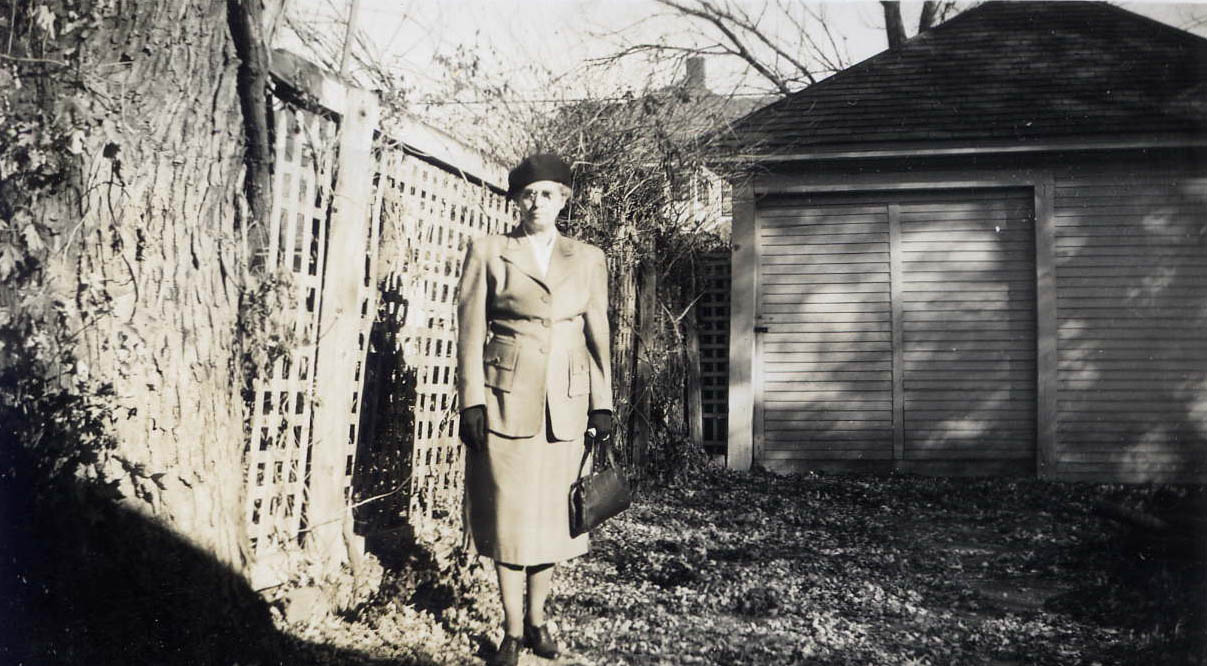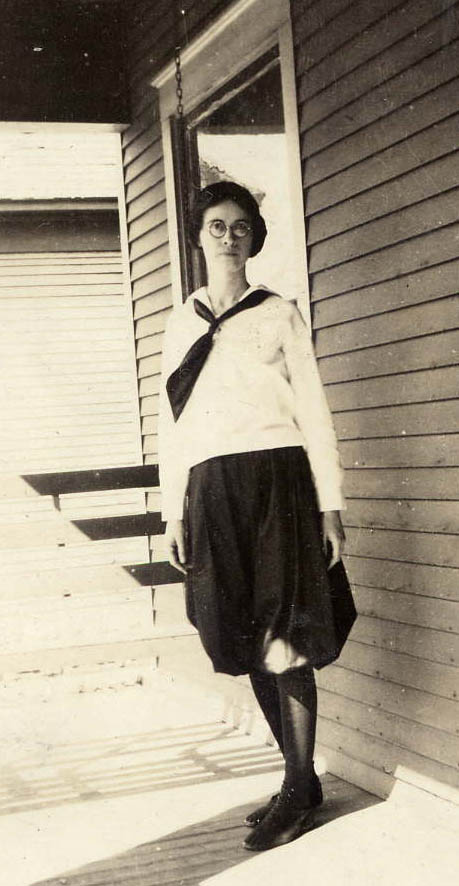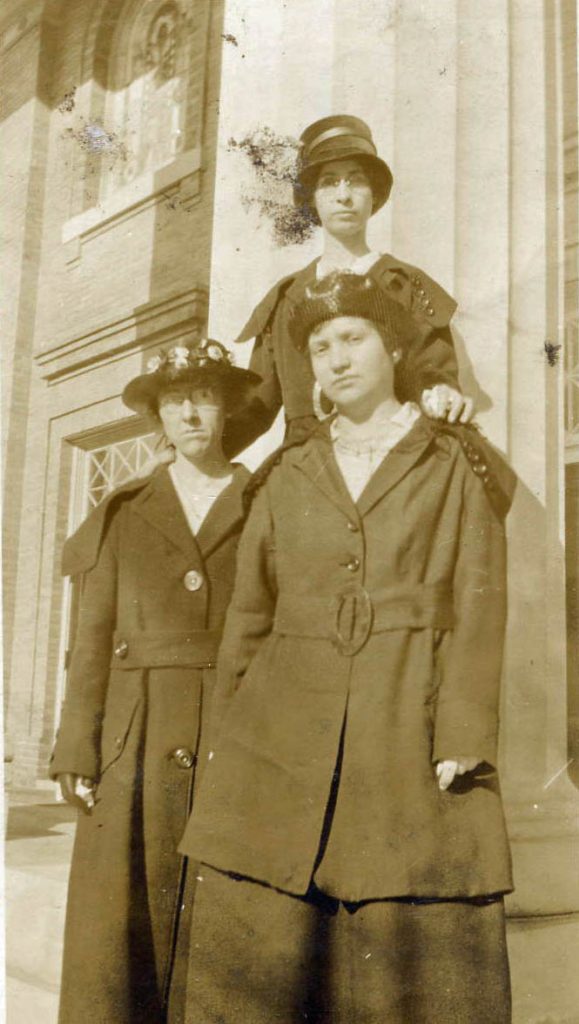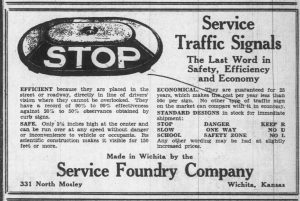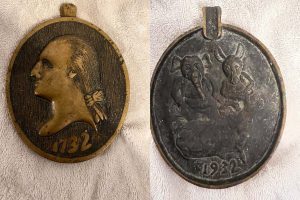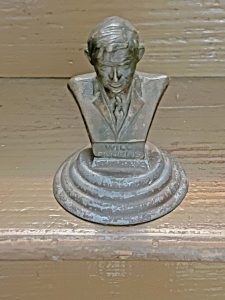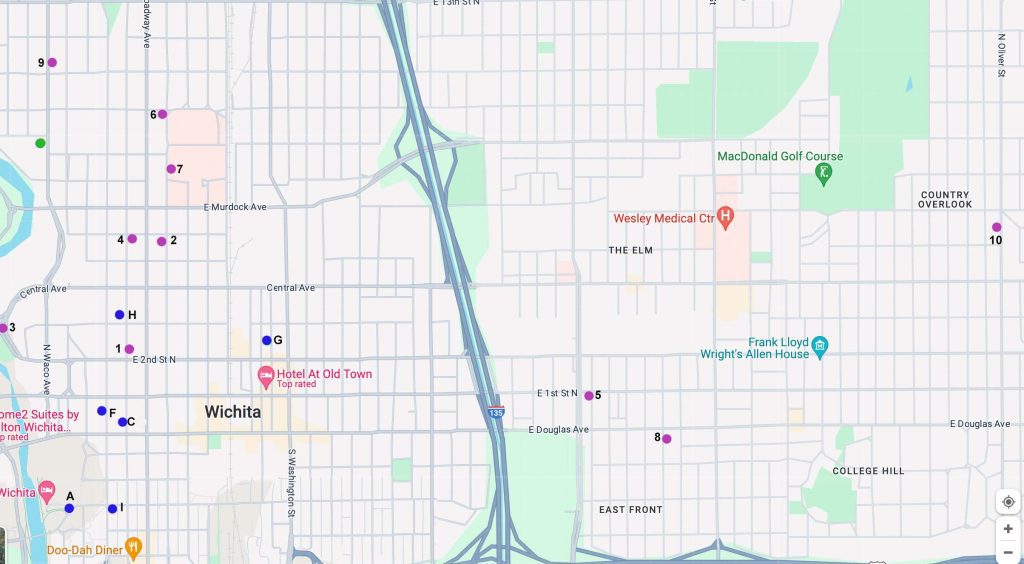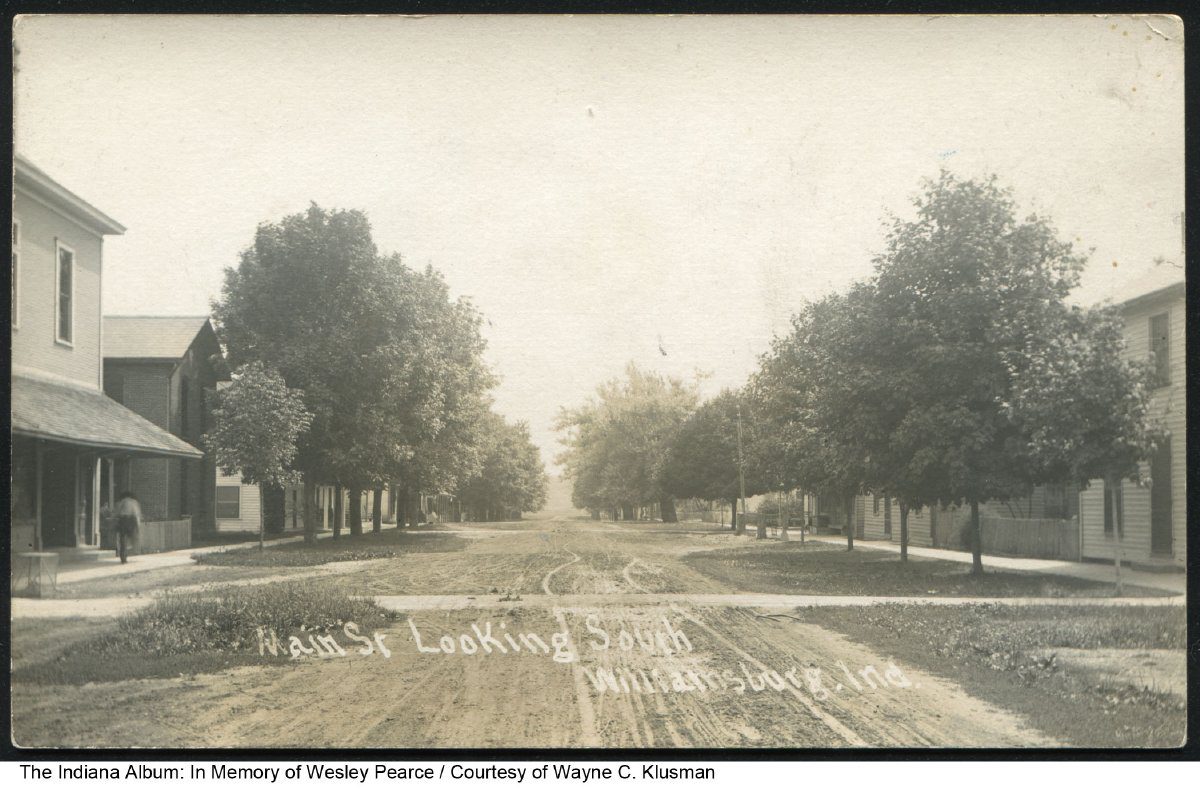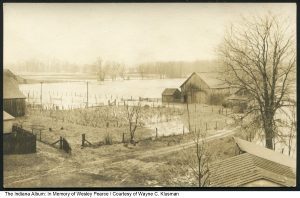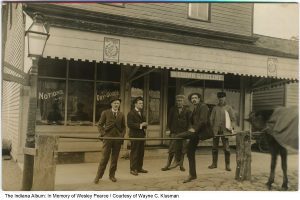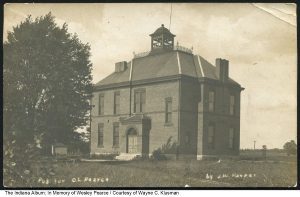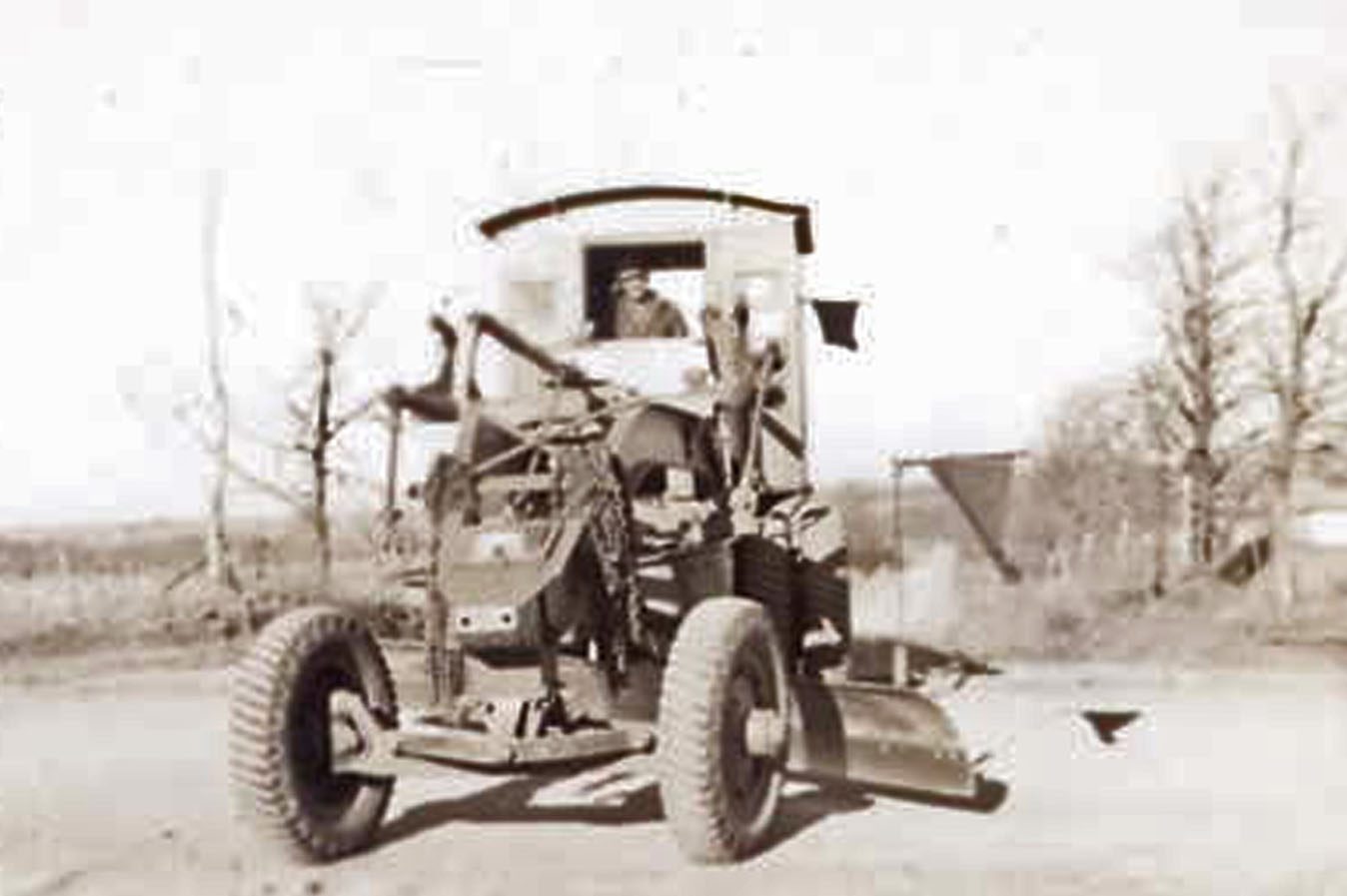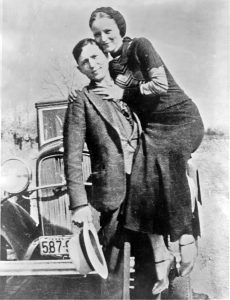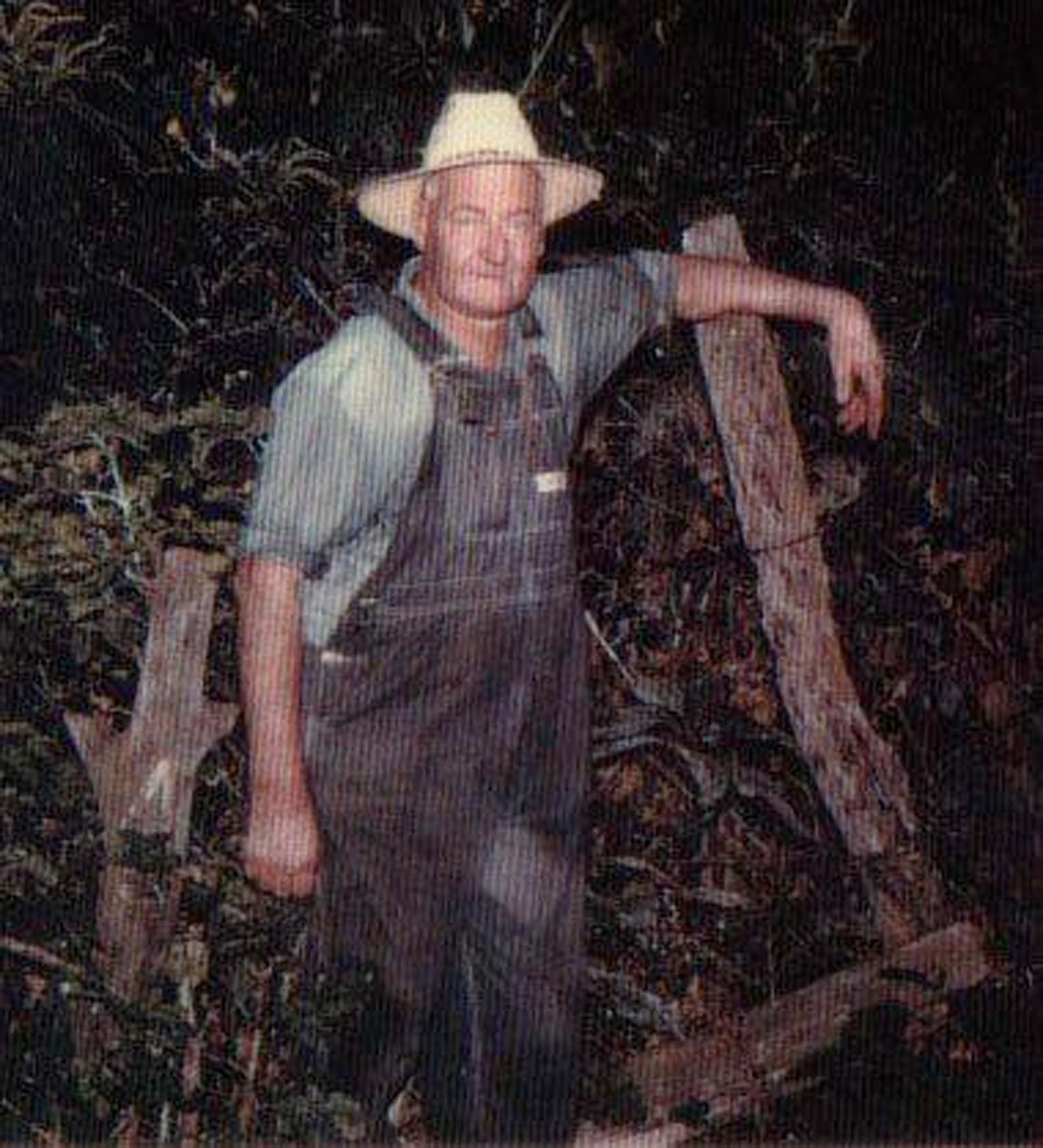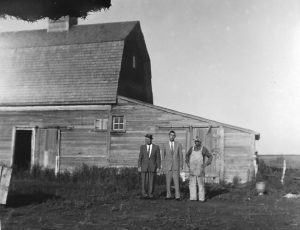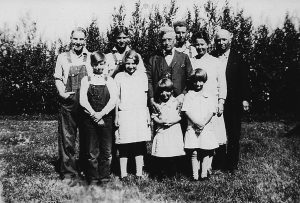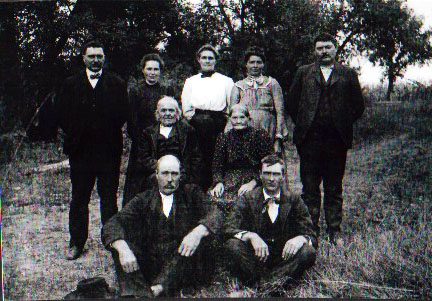
When a woman immigrates to America and marries within the month in the interior of the country, it begs many questions.
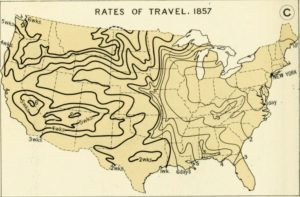
The Marriage
Twenty-five days after Mary Herzberger arrived in New York, she married Phillip Helm in Hollowayville, a small community in north-central Illinois. If she traveled by train, Mary could have reached that part of Illinois in two to three days. Mary and Phillip would have had three solid weeks for their courtship. Note: The graphic at the right shows that the area where Phillip lived is close to the line between travel from New York taking 2 days and 3 days.
The quick courtship brings many questions to mind. For instance,
- Did they know each other in Germany and she came to join him?
- Was it an arranged marriage?
- Was Mary some sort of mail-order bride?
- Did they just meet and fall in love?
- Did they just meet and each needed a spouse?
In an attempt to answer these questions, let’s look at Phillip and Mary’s lives before and after they married. An analysis of each possibility to determine the viability follows.
Phillip

Phillip, whose formal name was Johann Phillip Helm, was born on October 13, 1824 in Edenkoben, Pfalz, Bayern, Germany. He was the son of Johann Nikolaus and Anna Catherina (Doll) Helm. Two days after his birth Phillip was baptized at the Evangelical Reformed Church (Evangelisch-Reformierte Kirche) in Edenkoben. I haven’t discovered anything more about his life in Germany.
|
ImmigrationIn 1854, Phillip immigrated to the United States. Note: A census states that he immigrated in 1857, but an immigration record that appears to be him is from 1854.
It is not known why he chose to come to America. However, by 1860, his occupation was farm labor. At the time, he was living in Granville, Putnam, Illinois with the Peter and Catherine Albright/Albrecht family. Peter and his wife were also from Germany. However, all of their children in the household were born in Illinois with the oldest being 15 years of age. Thus, they had come to the United States well before Phillip.
Phillip continued farming as his occupation throughout his life.
Note: The spelling of Phillip also shows up as Philip, Philipp, and Phillipp.
|
Mary

Mary, formally known as Maria Katerina Herzberger, was born October 18, 1838 in Hessen, Germany. Although there is speculation as to her parents’ names, I have not been able to confirm them.
Immigration
On June 6, 1861, Mary arrived in New York aboard the ship Cedar. She was 22 years old and listed as a servant. During the voyage across the ocean from Bremen, German, Mary, along with many others, traveled between the decks in an area designed to carry cargo. In those days, the passengers seeking the cheapest passage to America would travel in this space. Then, on the return voyage, furnishings were often removed and the area filled primarily with cargo.
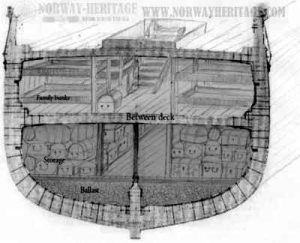
The between-deck space wasn’t very luxurious. The space typically had 6 to 8 ft. ceilings and was filled with multi-person bunkbeds and very little walking space. The bunks generally had straw mattresses and passengers had to provide their own blankets and pillows. If you were lucky, you got a bunk in the middle of the ship where less motion was felt.
Questions, But No Answers
Mary Came to Illinois to Join PhillipDid they know each other in Germany and she came to join him?
Initially, when I saw a record that stated he immigrated in 1857, I thought it was possible that they had known each other and he had earned money for her passage. With that immigration date, Mary would have been 18 and Phillip would have been 33 when he left. It is a big age difference, but not out of the realm of possibility. However, when I found additional records that showed that he likely came to America in 1854, it made me question this possibility a bit more as he would have been 30 and she would have been 15. Still possible, but a bit less likely. Also, it seems unlikely that Phillip would have waited seven years before sending for Mary.
Was it an arranged marriage?Arranged marriages did occur in Germany. However, Germany appears to have been known over the years more for rules, limitations, and approvals required for marriage. In this case, it would have been “arranged” in Germany, but performed in the United States. This option doesn’t seem as likely as some other scenarios given that Phillip was 37 and Mary was 22 when they married. I am guessing an arranged marriage would have come into play at an earlier age.
Was Mary some sort of mail-order bride?Prior to 1900, these types of relationships were often called “correspondence courtships.” Personal ads, mutual acquaintances, or matrimonial periodicals were the conduit for the two people living some distance apart to be introduced to each other. Sometimes they wrote back and forth for some period of time. Other times, they simply decided to marry without much knowledge of each other.
Usually, the woman would travel to where the man lived. And, many times, the man provided funds for the travel, especially if international travel was involved. Given that a shortage of women existed in many frontier areas, it is very possible that Phillip sought a bride using this process. And, the fact that they were both German would simply mean that he sought a woman who shared his culture, which was common in correspondence courtships.
Phillip very well may have had difficulty finding a wife as men generally outnumbered women on the frontier. The only reason to question this possibility is that in 1860 he was working as farm labor, which implies that he likely would have had very few funds to put toward Mary’s passage. Additionally, her immigration record states that she was a servant. But who did she serve? Was she a servant before she traveled to gain funds for the trip? Was she a servant to someone on the ship? Or, was she to become a servant upon arrival?
Mary & Phillip Met in IllinoisDid they just meet and fall in love?I suppose Mary and Phillip could have simply met, fell in love, and married. The time frame is very short, but Phillip was 37 and he probably wanted to have a wife and put down roots. At 22 and new to the area, Mary may have looked like a breath of fresh air.
In this case, the question that comes to mind is, “Why did Mary go to Illinois?” Something had to have brought her to a small rural community. Germans lived in the area, but something had to have motivated her to go so far across the county so soon after her arrival. I have considered that perhaps she was a servant for someone who moved to the area, but I have not yet identified any other people on the ship that moved to the area. Note: Many of the names are very difficult to read. Thus, making it challenging to go through the entire ship’s manifest.
Did they just meet and each needed a spouse?This scenario is similar to the previous one. However, it is more believable that they just wanted/needed a spouse and decided to marry than that they actually fell in love at first sight. Phillip was likely looking for a wife and as a single woman in a foreign land, Mary likely would have wanted to have someone to support her. Still, the question of what drew Mary to the Hollowayville area remains. The Albright/Albrecht FamilyIn 1860, Phillip was living with Peter and Catherine Albright, Albrecht in some records. I have considered that they could have arranged for Mary to come to Illinois to marry Phillip (i.e. an arranged marriage). Another consideration is that they knew her family and she immigrated and planned to stay with them initially (i.e. fell in love or needed a spouse). Mary could have also traveled there with someone who knew the family. Any of these scenarios are possible. I have not, however, found a connection between the Albright family and the Herzberger family. That does not mean that one does not exist.
I have also considered that Herzberger might not be Mary’s maiden name. Instead, at 22, Mary could have been married and widowed or divorced. In that case, the family might have known her by her married name and never have known her maiden name.
My TheoryI found no conclusive answers. At this point, I believe it is most likely that they met in America and that the Hollowayville area was Mary’s original destination. I lean toward her either coming there to marry Phillip or to stay with someone in the area. What do you think? Other theories?
|
Their Life Together
No matter what brought them together, Phillip and Mary enjoyed a long and fruitful marriage. To this union 13 children were born. Around 1885, with some of the children fully grown, the entire family moved to Nebraska. Phillip and Mary lived in Otoe County, Nebraska the remainder of their lives. Phillip died in 1907 at age 82 and Mary died in 1924 at age 86. At the time of her death, they had 62 grandchildren and 27 great-grandchildren. Three more grandchildren and countless great-grandchildren would be born after her death.
The featured image at the top of the page is of Phillip, Mary, and a portion of their children. The photo at the bottom shows family at family gathering.

